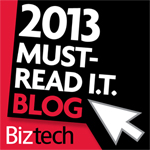
co-authored with Rob Boudrow
A few days ago, we had a great chat with Marc Cecere, Forrester’s CIO and IT organization expert on the trends and changes we are seeing in IT organizations. The great thing about talking with analysts is that it forces you to summarize your thinking. In gathering our thoughts, we think two types of questions are currently driving re-evaluation of IT org structure:
- How can we improve our business operations using technology?
- What does IT need to do to best support recent business strategy changes?
Interestingly, both of these questions have emerged as a result of the recent economic downturn and pending recovery, albeit at different times in the cycle. Improving business operations with IT got attention first as each and every part of the business has been under the microscope over the last couple of years. Supporting business changes is a more recent topic as corporate leaders are setting new courses to emerge stronger and CIOs are seeking to understand how to best support the changes.
Improving Business Operations
Where do the business process experts live in your organization? We’re not talking about the people who are experts in operating the processes every day but those who truly understand the processes that make things run - both the individual processes and the overall “operating model” or how they all fit together. Some manufacturing firms and those with a strong quality culture have organizations focused on process design and management in addition to line process experts. Some others have added a process view into their business and/or enterprise architecture planning and measurement. However, we suspect that for a majority of companies, some of the best process design, analysis, troubleshooting and management skills live in IT.
Many investment banks, where IT is also the product manufacturer, recognized the Ops and Tech synergies long ago and have combined the two into a single organization. Companies in industries seeking more operational efficiencies have started to explore this combined Tech+Ops organization model too. We have see early signs of this trend in Health Insurance, P&C Insurance and Financial Services industries where IT also has a significant role in manufacturing.
There are many implications of this combined organization but the most significant is how to maintain the focus on innovation as the process/ops emphasis will surely drive attention to efficiency and productivity. For organization in which IT is only expected to drive internal innovations, this model may be a perfect fit.
Supporting Business Change
As organizations prepare for another growth cycle, they will at a minimum need to change some of their metrics and some will re-evaluate their fundamental strategies, like one of our global clients. They have traditionally grown with a North American dominated strategy. Contemplating their next wave of growth, the CEO knew that each region would need their own goals and leadership to drive it. As a result, they have a new set of regional organizations.
What should be IT’s response? They could stand pat, assuming that they already know their global businesses and are serving them well or they could re-organize to get physically closer to each business and configure each regional IT team for its mission - rapid growth, agility, operational efficiency, etc.
Whenever the discussion centers on the age-old “centralized or decentralized” organization trade-offs, we always come back to one question. Does the IT organization already operate well using a single set of management and operational processes? If so, then decentralization of some parts is an option. If not, then trying to drive fundamental standardization in a decentralized organization is a non starter. The organization must already know how to work together before it starts to separate itself.
We would love to know how the trends in your industry are causing you to re-think your organizations - or not.
Did you enjoy this article? Please subscribe to CIO Dashboard to receive the latest posts!



Pingback: Tweets that mention Two Organization Questions Facing the CIO (please RT and comment) #CIO #strategy #org -- Topsy.com
Pingback: uberVU - social comments
Pingback: Business Alignment - Current Thinking for IT Leaders — CIOpedia
Pingback: Closing the IT Skill Gap — CIO Dashboard
Pingback: Reverse Mergers - IT Lessons Learned — CIO Dashboard